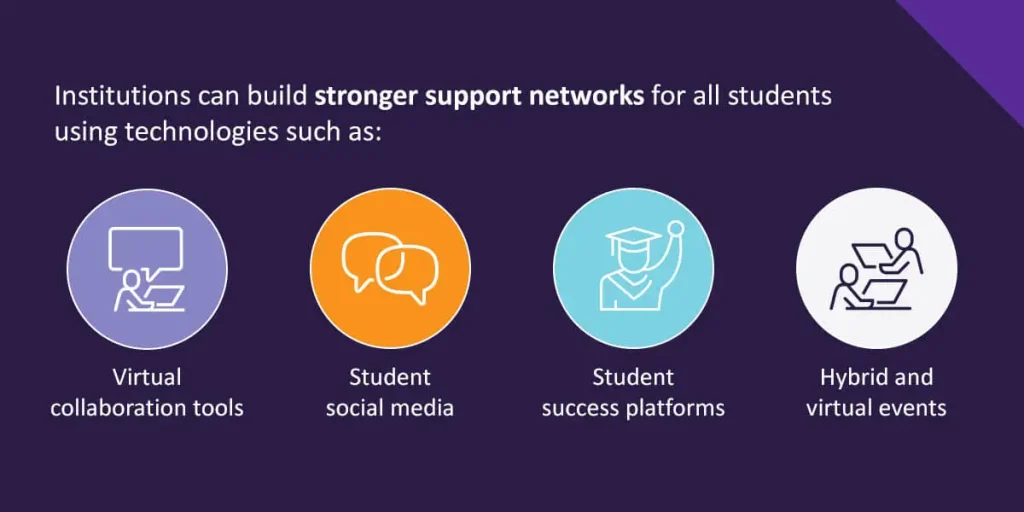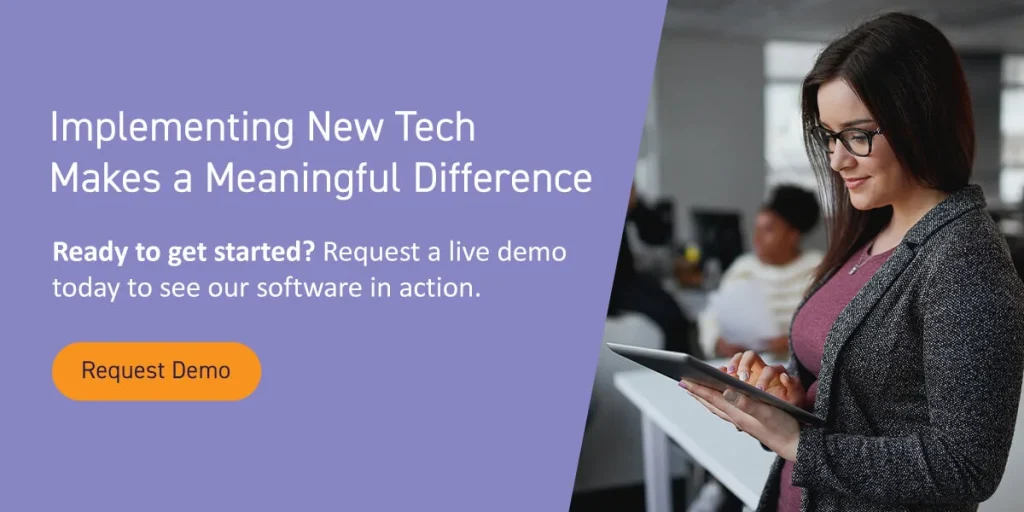
From early learning management systems to new technology, higher ed has seen enormous changes over recent decades. And those changes will only continue. The ever-evolving digital landscape means students, faculty, and administrators face different challenges and opportunities constantly, and investing in new tools can help your institution respond better to these situations when they arise.
7 Reasons To Upgrade to New Tech for Higher Education Institutions
Here are the biggest reasons why now is truly the time to begin investing in new technology for higher education.
1. Predictive Analytics Boosts Enrollment and Retention
Enrollment in higher education has been on the decline for years now, and the impending demographic shifts will only make the recruiting landscape more competitive. Software with predictive analytics capabilities can pull insights into which prospective students are most likely to enroll and complete their education at your institution, which can help your enrollment management team bring in consistently high numbers.
Retention is an even bigger issue. Keeping students on campus is crucial for an institution’s financial success, yet the population of students who drop out or transfer has grown significantly. Data analytics tools can identify which students are most at risk of failing to complete their degrees, which enables staff to intervene and re-engage them in a timely fashion.
2. Digital Transformation Is Ramping Up
Although 77% of instructors at higher education institutions believe digital transformation is important for their workflows, institutions are slow to keep up. In a 2021 Adobe survey, faculty respondents revealed that digital transformation initiatives were only 37% to 38% complete. Their situations have improved slightly since then, but it’s still true that institutions need to move beyond digitizing mission-critical workflows to stay afloat in an increasingly competitive landscape.
Digital transformation means implementing digital technology into every part of your organization that makes sense. And while this process can take time, it’s well worth the effort — digital transformation can help enhance your institution’s cybersecurity, save staff valuable time and energy, and better meet each student’s needs.
3. AI Adoption Is Rapidly Accelerating
ChatGPT, OpenAI’s generative AI model, took the world by storm in late 2022. Now, it seems almost every organization is releasing its own AI offerings — and this new tech is set to radically disrupt higher ed in the coming years.
In addition to crunching numbers for admissions and student success departments, AI tools can help provide additional support to students and faculty in the form of automated chatbots, course recommendations, and research assistance. The potential applications are seemingly endless.
4. The Workforce Is Changing
As a result of the shift toward AI, employers are increasingly looking to hire workers with AI skills — in fact, the majority of HR managers say the ability to use AI effectively is the most desirable technology skill in a candidate. Many higher education institutions, however, are banning generative AI like ChatGPT and Google’s Bard in an attempt to prevent plagiarism.
How can students gain the experience they need without putting themselves in danger academically? Finding creative ways to incorporate advanced technologies like AI into program curricula can help relieve pressures on both ends. Students can build confidence in the skills they need to succeed after graduation, and faculty can ensure their students produce original work.
5. Remote and Hybrid Work Are Here to Stay
Many students have turned to working and learning from home at least part of the time in recent years. Faculty and staff need tools that can help them get the most out of every interaction with each other and with students, even when that interaction is virtual. Some examples of those tools include:
- Student information systems (SIS): A centralized web-based platform enables your institution to more effectively store, manage, and use student data. Data analytics capabilities in SIS platforms help generate actionable insights from student information you can use to make improvements.
- Learning management systems (LMS): An LMS like Canvas or Moodle lets instructors create and deliver courses over the internet. Students can access course materials, connect with instructors, submit assignments, and view their grades all from the application.
- Video conferencing tools: Whether an instructor’s course follows a synchronous class schedule or they open virtual office hours for their online students, video meeting platforms like Zoom or Google Meet are essential for facilitating clear communication.
Because many instructors will need additional support to use these tools, institutions should also consider investing more resources into their IT departments.
6. Connected Tech Platforms Help Build Community
When students feel they belong at their institution, they’re more likely to stay engaged with their coursework and graduate on time. For commuters and students in online programs, it’s easy to lose touch with the rest of the campus community.

Institutions can build stronger support networks for all students using technologies such as:
- Virtual collaboration tools: Cloud-based collaboration platforms let students work together from different geographical locations, which can help ease feelings of isolation.
- Student social media: Some institutions develop their own social media platforms to encourage students to interact with their peers and form online communities.
- Student success platforms: Student success software analyzes massive volumes of student data to identify at-risk students and connect them to a support network.
- Hybrid and virtual events: Hosting campus events via video conferencing platforms or livestreams provides greater flexibility to students who may be unable to attend in person, which shows your institution truly cares for its students.
7. Personalized Learning Is the Future of Education
Many people expect a personalized experience in every aspect of their lives — and that includes their education. The conventional “one-size-fits-all” education model simply doesn’t work for most students, especially in the case of nontraditional attendees like adult learners.
Students need autonomy over their education to be truly successful. That’s where data analytics tools come in. Leveraging big data can help your institution refocus its mission to be more student-centric by:
- Recommending courses that take into account each student’s unique interests.
- Creating custom degree paths that prepare students more effectively for their career aspirations.
- Building schedules that let students maintain a healthy balance between their classes, work, and personal life.
Implementing New Tech Makes a Meaningful Difference
Smart use of technology made difficult times easier for students and faculty during the pandemic, and institutions can continue to leverage new tech tools to prepare for the challenges of the future. Watermark offers a comprehensive suite of advanced data analytics and assessment solutions for accurate, data-driven decision-making and improved student outcomes.
Ready to get started? Request a live demo today to see our software in action.















































































































































































































































































































































































































